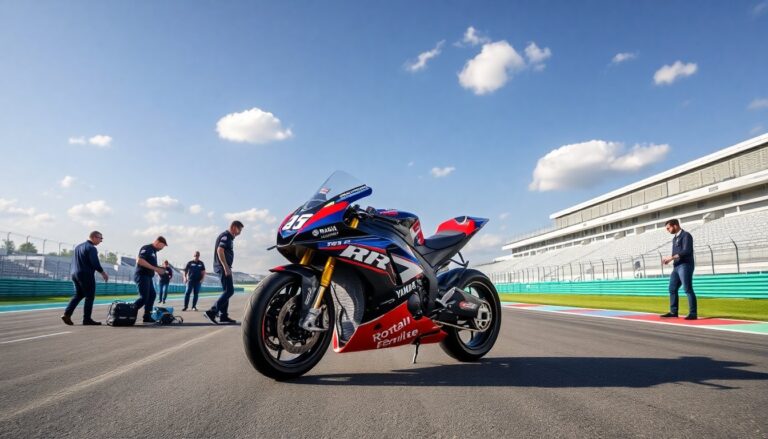Argomenti trattati
The world of MotoGP is witnessing significant technological advancements, particularly with Yamaha Motor Co., Ltd. making notable changes to its engine design. The company has traditionally relied on the inline-four (I4) engine for its YZR-M1 motorcycle. However, Yamaha is now taking a bold step forward by unveiling a V4-powered prototype in Misano. This strategic shift underscores Yamaha’s commitment to maintaining competitiveness and reflects the need for adaptation in a rapidly evolving sport.
Understanding the transition from I4 to V4
Yamaha’s decision to transition from the I4 engine configuration reflects a strategic response to performance limitations identified since the championship season. The I4 engine has long been appreciated for its rider-friendly handling and agility. However, emerging trends indicate that it struggles to compete with rival manufacturers that utilize V4 engines. This shift has become evident through declining top speeds and diminished rear tire grip affecting the M1, prompting a thorough reassessment of its competitive position.
Challenges faced by the inline-four architecture
The decline in competitiveness of the inline-four (I4) engine can be traced to several fundamental issues. This architecture has struggled to deliver sufficient top-end power while effectively managing rear tire grip, which is essential for aggressive acceleration out of corners. The design of the M1, once lauded for its dynamics, has proven inadequate in meeting the current demands of the sport, prompting Yamaha to explore alternative configurations.
In response to these challenges, Yamaha has been quietly developing a V4 prototype alongside its existing I4 framework. This transition represents a significant departure from a two-decade tradition, indicating a bold move towards a more aggressive and innovative approach to motorcycle engineering.
Advantages of the V4 engine configuration
The transition to a V4 setup offers Yamaha distinct advantages not present in the I4 platform. A key benefit is the engine’s longitudinal compactness, which results in a narrower frontal profile and improved aerodynamics. These features are crucial for reducing drag, ultimately enhancing the motorcycle’s straight-line speed, an area where the I4 configuration has faced challenges.
Power delivery and tire management
The ability to manage power delivery is a crucial feature of the V4 design. Unlike the I4 engine, which applies continuous torque, the V4 can provide short, powerful bursts of torque through Big Bang firing orders. This method creates intervals of reduced torque, allowing the rear tire to regain grip before the next pulse of power is delivered. Such a mechanism is vital for maximizing acceleration out of corners, an essential element in competitive racing.
This sophisticated power management not only boosts performance but also enhances tire longevity. This improvement enables teams to sustain competitive lap times over extended distances. Thus, Yamaha’s transition to a V4 engine represents more than just an upgrade; it is a strategic move aimed at reclaiming its status among the leading competitors in MotoGP.
The future of Yamaha in MotoGP
Yamaha is gearing up for the upcoming seasons with the introduction of its V4 engine, a development that is set to significantly alter its trajectory in MotoGP. This shift aligns with an emerging trend in the sport, where technological advancements continually redefine competitive standards. The V4 architecture is expected to provide a structural advantage that will enhance Yamaha’s overall performance and adaptability on the racetrack.
Furthermore, integrating the V4 engine into Yamaha’s design philosophy highlights the necessity for a seamless connection between engineering excellence and rider experience. The company intends to capitalize on its rich engineering heritage while embracing innovations crucial to thriving in the premier class of motorcycle racing.
Yamaha’s transition from the inline-four to the V4 engine marks a pivotal moment in its history. This strategic shift aims to rectify past challenges and position the manufacturer to compete effectively in an increasingly demanding and competitive environment.

